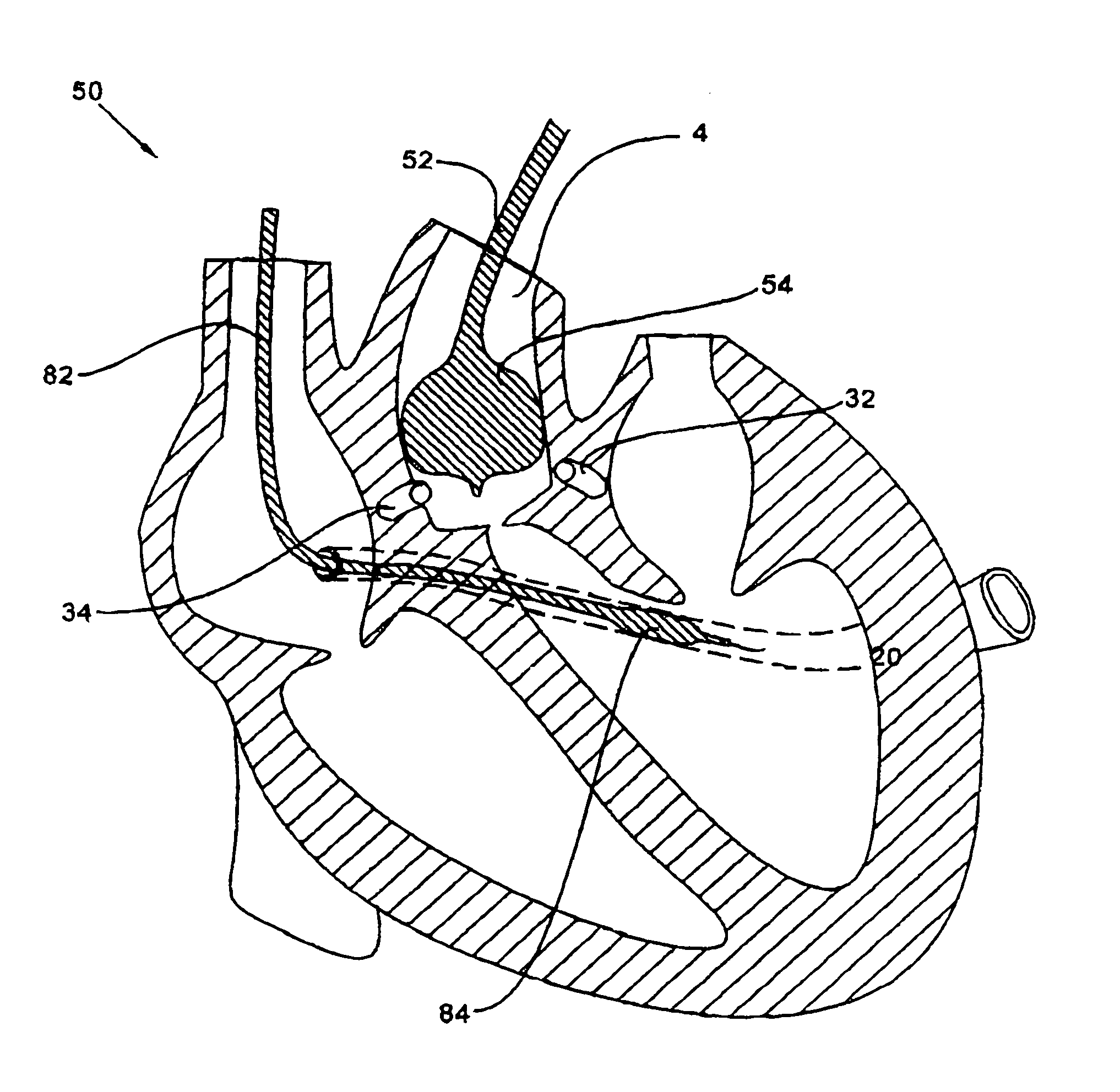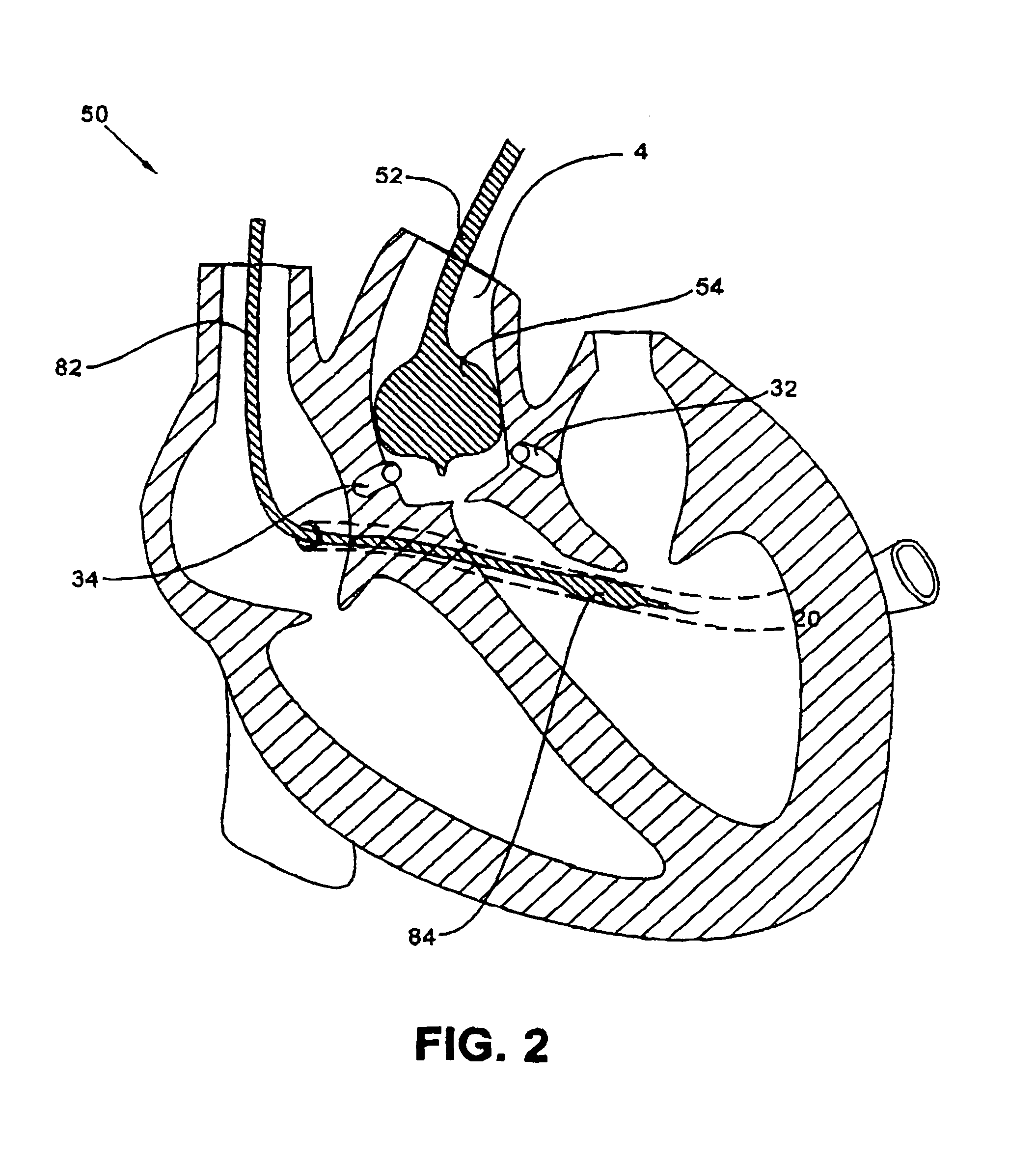Conduit system for isolation of fluids in biological tissues
a biological tissue and fluid technology, applied in the field of fluid isolation in the biological system, can solve the problems of inability to employ potentially helpful agents for therapy, limited usefulness of agents, and hemorrhaging throughout the body, so as to reduce undesirable effects, prolong the residence time of fluids and/or agents, and increase the efficacy of certain agents
- Summary
- Abstract
- Description
- Claims
- Application Information
AI Technical Summary
Benefits of technology
Problems solved by technology
Method used
Image
Examples
Embodiment Construction
[0040]A fluid isolation system and method of its use are provided for confining fluid treatment to a target tissue. The apparatus of the present invention utilizes upstream and downstream conduits that are positioned to allow the fluid to flow along the tissue's circulatory pathway. In the method in accordance to the present invention, fluid is delivered through a conduit, flushes the tissue and thereafter is captured by another conduit.
[0041]The fluid that is transported via the present invention is any liquid or gas of interest. Exemplary fluids are water, saline, blood, plasma, etc. The fluid often contains an agent to assist in diagnosis, therapy and disease prevention. The agent may be natural and synthetic drugs, growth factors, gene therapy compositions, anti-angiogenesis chemicals, chemotherapeutic chemicals, anti-bacterial chemicals, ions, cells, small and large molecules, other agents, and any combination thereof. In particular uses, the agent may be an anti-proliferative ...
PUM
 Login to View More
Login to View More Abstract
Description
Claims
Application Information
 Login to View More
Login to View More - R&D
- Intellectual Property
- Life Sciences
- Materials
- Tech Scout
- Unparalleled Data Quality
- Higher Quality Content
- 60% Fewer Hallucinations
Browse by: Latest US Patents, China's latest patents, Technical Efficacy Thesaurus, Application Domain, Technology Topic, Popular Technical Reports.
© 2025 PatSnap. All rights reserved.Legal|Privacy policy|Modern Slavery Act Transparency Statement|Sitemap|About US| Contact US: help@patsnap.com



